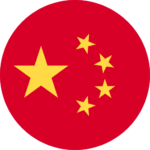
By Lukas Fiala
With most of my attention span occupied by events in the U.S. this week, I sought a brief refuge from Beltway politics by turning to one of the subjects I promised to keep an eye on this year: China’s evolving role as a security partner across the Global South. What caught my attention were reports about Algeria localizing the production of Chinese Type-056 corvettes in domestic shipyards. Built under a Chinese license, the deal reflects how China’s recent export boom goes well beyond the usual focus on electric vehicles and solar panels.
More specifically, the deal suggests a larger shift in how China approaches its second-tier arms customers. While Algeria has a recent history of purchasing Chinese military equipment, including CH-3 and -4 military UAVs, the emphasis on producing at least one of the promised corvettes locally demonstrates China’s growing willingness to engage in defense technology transfers with foreign counterparts.
Chinese firms have, in recent years, pursued such arrangements with partners in countries such as Thailand, Uganda, and Saudi Arabia, especially for drone technology. Taken together, these instances suggest the expansion of China’s “Pakistan model,” which has long featured varying degrees of joint development and production for platforms such as the K-8 trainer, JF-17 fighter, MBT-2000 and VT-4 tanks, and Type-39 Yuan-Class submarines, to countries and regions.
While Pakistan has long been the largest market for Chinese defense exports, these recent advances demonstrate that governments across the Global South may well see China’s rise to become an innovation powerhouse as an opportunity to transform their domestic defense-industrial bases.
For China, on the other hand, such engagements readily cohere with a smaller but nevertheless impactful developmental footprint abroad. As I have argued before, while large-scale infrastructure projects might be a thing of the past, Beijing can leverage its increasingly capable innovation ecosystem to sustain economic engagements in this period of readjustment.
After all, the above deal comes after Xi and Algerian President Abdelmadjid Tebboune met in Beijing in 2023 to pledge further cooperation across aerospace, nuclear energy, ICT, and renewable energy. Tebboune, of course, pledged Algeria’s support for China’s recently launched Global Development Initiative (GDI), Global Security Initiative (GSI), and Global Civilization Initiative (GCI).
Despite its vague language, the GSI, in particular, will continue to offer signposts for Chinese defense firms on where to find potential customers. And in the context of China’s overall export boom, it is likely that firms will be keen to follow suit.
Based on export data calculated with the in-house metric (TIV) from the Stockholm International Peace Research Institute, for instance, China exported 3650 TIV worth of arms from 2018-2020. From 2021-2023, the figure amounted to 5824 TIV, representing an increase of almost 60% over the previous three-year period.
These numbers support my personal observations at defense expos across Europe, Asia, and the Middle East over the past two years: While China’s export programs still have to confront challenges rooted in the industry’s legacies of central planning, Chinese firms have made notable headway in becoming suppliers of well-tailored solutions for the defense needs of small and middle powers across the Global South.
With China demonstrating its next-generation fighters during the Christmas holidays and rumors surfacing about a potential Pakistani acquisition of Chinese J-35 stealth fighters in the not-too-distant future, these trends will likely keep China watchers busy in the years to come.
Lukas Fiala is the project head of China Foresight at LSEIDEAS.









